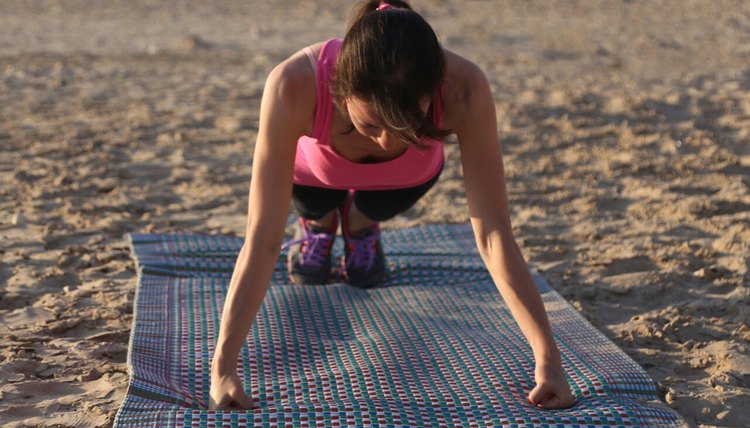What does fact checked mean?
At SportsRec, we strive to deliver objective content that is accurate and up-to-date. Our team periodically reviews articles in order to ensure content quality. The sources cited below consist of evidence from peer-reviewed journals, prominent medical organizations, academic associations, and government data.
The information contained on this site is for informational purposes only, and should not be used as a substitute for the advice of a professional health care provider. Please check with the appropriate physician regarding health questions and concerns. Although we strive to deliver accurate and up-to-date information, no guarantee to that effect is made.
Plane-of-Motion Exercises (With List and Video)

Figuring out which exercises to include in your training program to improve your overall general physical preparedness is a difficult task, even for personal trainers who specialize in strength training.
One way to reach your fitness goals is to include exercises that will work your body’s muscle groups in all the movement patterns and range of motion you find yourself following on a daily basis. Using different plane-of-motion exercises will help you do that.
Planes of Movement
In kinesiology, the human body can move in three planes of motion -- sagittal, frontal and transverse. The planes split your body into halves. For example, the sagittal plane involves movements to the front and rear, including bicep curls, barbell squats and running. The frontal plane includes movements to the side, such as side lunges and lateral raises. Transverse plane movements rotate your body, like a batter's swing in baseball or a golf swing.
Sagittal Plane
The sagittal-plane cuts the body into right halves and left halves, and movements in this plane are forward and backward movements. Sagittal plane exercises involve flexion and extension. Laree Draper of Davedraper.com points out that most gym exercises, including squats, flat bench press, deadlifts, and push ups work in the sagittal plane.
Bicep curls, which start by holding the weight in the extension phase and curl the weight up to the point of flexing the bicep, is a sagittal-plane movement. It is important to include exercises from the other planes in your program to prevent injuries and sculpt a well-balanced body.
Frontal Plane
The frontal plane, also known as the coronal plane, cuts the body into front halves (anterior) and back halves (posterior). Exercises in the frontal plane include abduction and adduction. These motions push a limb away from the midline of your body, out to the side, then pull back to the imaginary line in the middle of your body.
Lateral lunges, side bends, lateral movements, jumping jacks and dumbbell lateral raises for your shoulders are considered frontal exercises. The frontal plane is important for sports involving side-to-side movement, such as tennis or basketball.
One other important aspect of the frontal plane is the inversion and eversion of the ankle.
- Inversion of the ankle: sole of your foot turns inward toward the midline of the body
- Eversion of the ankle: sole of your foot turns outward away from the body’s midline (a component of pronation)
Transverse Plane
The transverse plane cuts the body into upper halves (superior) and bottom halves (inferior). Transverse movements, also known as rotational movements, are common in many sports, from throwing motions to a golf swing. Many injuries occur during transverse movements, so it is even more important to exercise these types of movements during your workouts if you plan to participate in sports.
Transverse plane exercises that you can use in an exercise program include medicine ball throws from the hip, oblique crunches and other abdominal exercises, or diagonal lunges requiring you to pivot and step.
Plane-of-Motion Exercise Video
LiveStrong's HIIT Workout Fire requires no equipment and works all three plane of motions.
List of Plane-of-Motion Exercises
Millions have viewed the free FIRE HIIT Livestrong video above and the list of exercises will exercise all three planes of motion :
- Wood Chops with Knee Up
- Lateral Doggies
- Roll up to Spot Sprints
- Stand Up Paddle
- Roll Up Criss
- Crab Walk Shuffle (We can attest this is a great exercise)
- Crescent Kick
- Kneeling Quad Stretch
- Kneeling Splits
References
Writer Bio
Jay Donelson began writing fitness and nutrition articles for LIVESTRONG.COM in 2011. Jay has a Bachelor of Arts in English from West Virginia University and a Master of Arts in adult education from the University of Rhode Island. He is also a National Academy of Sports Medicine (NASM) Certified Personal Trainer and a Certified Fitness Nutrition Specialist (CFNS).
